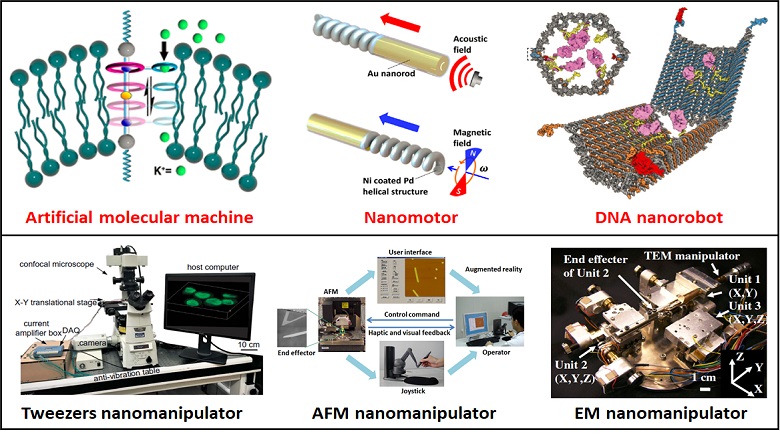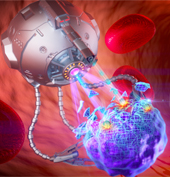
The coming era of personalized medicine requires the precise diagnosis and treatment of human diseases at single-molecule level and the size of individual molecules is in the range of nanometer, which present grand opportunities for the development of medical nanorobotics. Nanorobots (the overall size is in the nanometer scale) and nanomanipulators (the overall size is in the macroscale but their end effectors can perform robotic manipulations on nano-sized objects) are two categories of nanorobotic systems, which are complementary with each other in performing different robotic operations for advancing biomedicine.
Breakthroughs have been achieved for nanorobots and their biomedical applications. Artificial molecular machines have been designed to autonomously perform iterative tasks on individual small molecules in robotic fashion, promoting the design and construction of nanorobots at the molecular level. Nanomotors are able to perform selected mechanical movements in response to specific propulsion mechanisms (e.g., chemical, biological, magnetic, light, acoustic) and biodegradable nanomotors based on copolymers have been developed. DNA origami technology allows the bottom-up self-assembly of three-dimensional functional nanostructures which are able to encapsulate drug molecules and specifically deliver the drug molecules to tumor cells in vivo under the navigation of molecular recognition.
Various robotic nanomanipulators have been developed to probe the behaviors of biological samples for in vitro biomedical applications. Optical tweezers-based nanomanipulators have been presented for performing robotic operations on single cells and single molecules, and magnetic tweezers-based nanomanipulators are able to manipulate intracellular structures inside individual living cells. Combining acoustic tweezers with microfluidic automation techniques allows automated manipulations of nanoscopic biological matters with high throughput. Atomic force microscopy-based nanomanipulators are particularly suited for probing the structures and properties of living biological samples in their native states under aqueous conditions with unprecedented spatial resolution, while electron microscopy-based nanomanipulators facilitate precise and rapid nanomanipulations on biomaterials.

